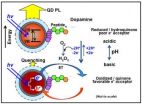(Press-News.org) Scientific data continue to indicate that higher intake of alcohol during pregnancy adversely affects the fetus, and could lead to very severe developmental or other problems in the child. However, most recent publications show little or no effects of occasional or light drinking by the mother during pregnancy. The studies also demonstrate how socio-economic, education, and other lifestyle factors of the mother may have large effects on the health of the fetus and child; these must be considered when evaluating the potential effects of alcohol during pregnancy.
A very large population-based observational study from the UK found that at the age of 5 years, the children of women who reported light (no more than 1-2 units of alcohol per week or per occasion) drinking did not show any evidence of impairment on testing for behavioral and emotional problems or cognitive ability. There was a tendency for the male children of women reporting "heavy/binge" drinking during pregnancy (7 or more units per week or 6 or more units per occasion) to have poorer behavioural scores, but the effects were less clear among female offspring.
A second study, published in Pediatrics, based on a population in Western Australia examined the associations between dose, pattern, and timing of prenatal alcohol exposure (PAE) and birth defects and found similar results, that there was no association between low or moderate prenatal alcohol exposure and birth defects.
Data from a randomly selected, population-based cohort of non- indigenous women who gave birth to a live infant in Western Australia (WA) between 1995 and 1997 (N = 4714) were linked to WA Midwives Notification System and WA Birth Defects Registry data. Information about maternal alcohol consumption was collected 3 months after birth for the 3 month period before pregnancy and for each trimester separately.
Low alcohol consumption was defined as less then 7 standard drinks (10g) a week, and no more than 2 drinks on any one day. Women who consumed more than 70g per week were classified as heavy drinkers and women consuming more than 140g were classified as very heavy drinkers.
The study results indicate that the prevalence of birth defects classified as ARBDs by the IOM was low. Compared with abstinence, heavy prenatal alcohol exposure in the first trimester was associated with increased odds of birth defects classified as ARBDs (adjusted odds ratio: 4.6 [95% confidence interval: 1.5-14.3]), with similar findings after validation through bootstrap analysis. There was no association between low or moderate prenatal alcohol exposure and birth defects.
Overall, current scientific data indicate that while drinking during pregnancy should not be encouraged, there is little evidence to suggest that an occasional drink or light drinking by the mother is associated with harm. Heavy drinking, however, is associated with serious developmental defects in the fetus.
###
References:
Kelly YJ, Sacker A, Gray R, Kelly J, Wolke D, Head J, Quigley MA. Light drinking during pregnancy: still no increased risk for socioemotional difficulties or cognitive deficits at 5 years of age? J Epidemiol Community Health 2010; doi:10.1136/jech.2009.103002
Prenatal Alcohol Exposure and Risk of Birth Defects; E Geelhoed, E.J. Elliott and C Bower C. M. O'Leary, N. Nassar, J.J. Kurinczuk, N. de Klerk, Pediatrics 2010;126;e843-e850; originally published online Sep 27, (available at http://www.pediatrics.org/cgi/content/full/126/4/e843)
Comments included in this critique by the International Scientific Forum on Alcohol Research were provided by the following:
Andrew L. Waterhouse, PhD, Marvin Sands Professor, Department of Viticulture and Enology, University of California, Davis.
Fulvio Ursini, MD, Dept. of Biological Chemistry, University of Padova, Padova, Italy.
Erik Skovenborg, MD, Scandinavian Medical Alcohol Board, Practitioner, Aarhus, Denmark.
Francesco Orlandi, MD, Dept. of Gastroenterology, Università degli Studi di Ancona. Italy.
Ross McCormick PhD, MSC, MBChB, Associate Dean, Faculty of Medical and Health Sciences, The University of Auckland, Auckland, New Zealand.
Tedd Goldfinger, DO, FACC, Desert Cardiology of Tucson Heart Center, Dept. of Cardiology, University of Arizona School of Medicine, Tucson, Arizona, USA.
Harvey Finkel, MD, Hematology/Oncology, Boston University Medical Center, Boston, MA, USA.
R. Curtis Ellison, MD, Section of Preventive Medicine & Epidemiology, Boston University School of Medicine, Boston, MA, USA.
For the detailed critique of this paper by the International Scientific Forum on Alcohol Research, go to www.alcoholforum4profs.org and click on Recent Reports.
The 35 specialists who are members of the Forum are happy to respond to questions from Health Editors regarding emerging research on alcohol and health and will offer an independent opinion in context with other research on the subject.
END
INDIANAPOLIS – Technologies for rapid detection of bacterial pathogens are crucial to maintaining a secure food supply.
Researchers from the School of Science at Indiana University-Purdue University Indianapolis (IUPUI) and the Bindley Bioscience Center at Purdue University have developed a novel approach to automated detection and classification of harmful bacteria in food. The investigators have designed and implemented a sophisticated statistical approach that allows computers to improve their ability to detect the presence of bacterial contamination in tested samples. ...
UPTON, NY - A new source of ions will soon be the starting point for the beams entering two major research facilities at the U.S. Department of Energy's (DOE) Brookhaven National Laboratory - the Relativistic Heavy Ion Collider (RHIC - http://www.bnl.gov/rhic), where physicists are recreating conditions of the early universe to learn more about the forces that hold matter together, and the NASA Space Radiation Laboratory (NSRL: http://www.bnl.gov/medical/NASA/NSRL_description.asp), where scientists study the effects of space radiation to help find ways to protect astronauts. ...
Alzheimer's disease is not the only type of dementia. Two particular forms are dementia with Lewy bodies and Parkinson's disease dementia. In both forms, the diagnosis is of vital importance because the treatment for these dementias differs from that for Alzheimer's dementia, as Brit Mollenhauer and co-authors explain in the dementia theme issue of Deutsches Ärzteblatt International (Dtsch Arztebl Int 2010; 107[39]: 684-91).
In more than 75% of patients, the memory impairments are due to Alzheimer's disease. In Lewy body dementia, which is accompanied by cognitive and/or ...
Scientists at the Naval Research Laboratory (NRL) in conjunction with the Scripps Research Institute in La Jolla, Ca., recently reported a detailed study of the interactions of water soluble semi-conductor quantum dots (QDs) with the electro-active neuro-transmitter dopamine. These biocompatible QD-dopamine nano-assemblies may be used as the active component for sensors that are used to detect a wide variety of target analytes ranging from sugars to peroxides.
According to NRL's Dr. Michael Stewart, a member of the research team "The nature of the QD-dopamine ...
The ordinary squid, Loligo pealii—best known until now as a kind of floating buffet for just about any fish in the sea—may be on the verge of becoming a scientific superstar, providing clues about the origin and evolution of the sense of hearing.
In a hangar-like research building at the Woods Hole Oceanographic Institution (WHOI), biologist T. Aran Mooney is exploring virtually uncharted waters: Can squid hear? Is their hearing sensitive enough to hear approaching predators? How do squid and other marine species rely on sound to interact, migrate, and communicate? Will ...
BUFFALO, N.Y. -- We've all heard the adage that whatever doesn't kill us makes us stronger, but until now the preponderance of scientific evidence has offered little support for it.
However, a new national multi-year longitudinal study of the effects of adverse life events on mental health has found that adverse experiences do, in fact, appear to foster subsequent adaptability and resilience, with resulting advantages for mental health and well being.
The study, "Whatever Does Not Kill Us: Cumulative Lifetime Adversity, Vulnerability and Resilience," to be published in ...
For the first time researchers have found out what effect multiple, rather than just single, foods with anti-inflammatory effects have on healthy individuals.
The results of a diet study show that bad cholesterol was reduced by 33 per cent, blood lipids by 14 per cent, blood pressure by 8 per cent and a risk marker for blood clots by 26 per cent. A marker of inflammation in the body was also greatly reduced, while memory and cognitive function were improved.
"The results have exceeded our expectations! I would like to claim that there has been no previous study ...
An article published in the October issue of the Annals of the Missouri Botanical Garden describes a new genus of tree of the Aptandraceae family, a group that is related to the sandalwoods (order Santalales). The genus, which has been given the name Hondurodendron, is endemic to Honduras and means "tree of Honduras."
In the article, "Hondurodendron, a New Monotypic Genus of Aptandraceae from Honduras," lead author Dr. Carmen Ulloa, associate curator at the Missouri Botanical Garden, and co-authors
Dr. Daniel L. Nickrent, Southern Illinois University-Carbondale, Dr. ...
How do astronomers weigh a star that's trillions of miles away and way too big to fit on a bathroom scale? In most cases they can't, although they can get a best estimate using computer models of stellar structure.
New work by astrophysicist David Kipping says that in special cases, we can weigh a star directly. If the star has a planet, and that planet has a moon, and both of them cross in front of their star, then we can measure their sizes and orbits to learn about the star.
"I often get asked how astronomers weigh stars. We've just added a new technique to our toolbox ...
Calgary, AB - Researchers at the University of Calgary Faculty of Medicine are using an innovative new imaging technique to study how white blood cells (called neutrophils) respond to inflammation, and have revealed new targets to inhibit the response.
When the body is invaded by infection, the immune system counters by generating inflammation with deployment of white blood cells to the site of danger to kill invading bacteria. However, inappropriate inflammation occurs in the absence of infection when tissues are damaged, and this inappropriate response contributes ...



